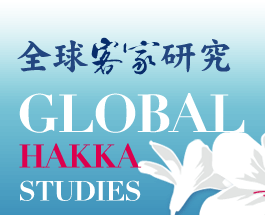|
|
| May 2022 |
 |
18 |
|
 |
| 頁數:9-42 |
| 當代客語散文的語言風格探究: 以苗栗作家為例 |
| Study on Language Styles in Modern Hakka Proses: Using the Writers in Miaoli as Examples |
|
 |
|

|
| 作者 |
李梁淑 |
| Author |
Liang-shu Lee |
| 關鍵詞 |
苗栗地區、客語散文、語言風格學、詞彙、句法 |
| Keywords |
Miaoli Area, Hakka Prose, Language Styles, Vocabulary, Grammar |
| 摘要 |
本研究以五位苗栗客籍作家已出版的散文集為範圍,借鑑語言風格學的觀念和方法,從音韻、詞彙和句法三方面來分析作家運用語言的風格特色。包含放寬共存限制、文言句式及書面語、熟語及歌謠的運用、詞彙的創造、詞類活用及詞義擴大等面向。研究發現:在放寬共存限制上,以張捷明、江昀二人放寬的幅度最大,藉由虛與實、具體與抽象搭配方式,創造出詩的意境和美感,最具詩化散文的特質。客語散文主要以客家口語語法、詞彙來創作,偶爾穿插格言、詩文典故及成語等書面語,使文章更趨於典雅;而熟語及歌謠的大量運用,能增進作品的地域色彩及族群文化底蘊。在詞彙的創造及應用上,多從華語轉譯、或以重疊構詞法創造新詞,並透過詞性變換及詞義擴大使用,形成許多靈活、創新的表達,正試煉著文學語言的可能性。 |
| Abstract |
This study focuses on the prose collection of five Miaoli Hakka writers and analyzes their language styles from phonetics, vocabulary and grammar. The research findings revealed the greatest significance in the liberation of coexistence limitation on the works of Jie-ming Chang and Yun Chiang for containing the most poetic features in their proses. Hakka proses are mainly created by Hakka colloquialism and occasionally by written language including mottos, allusions of poems and idioms to add a touch of classic attribute. Significant use of idioms and ballads enhances the regional characteristics and cultural deposits of works. New words are created by translation or reduplication. By changing parts of speech and expanding the meanings of words, flexible and original expressions are developed.
|
|
|
 |
|

